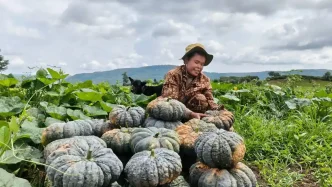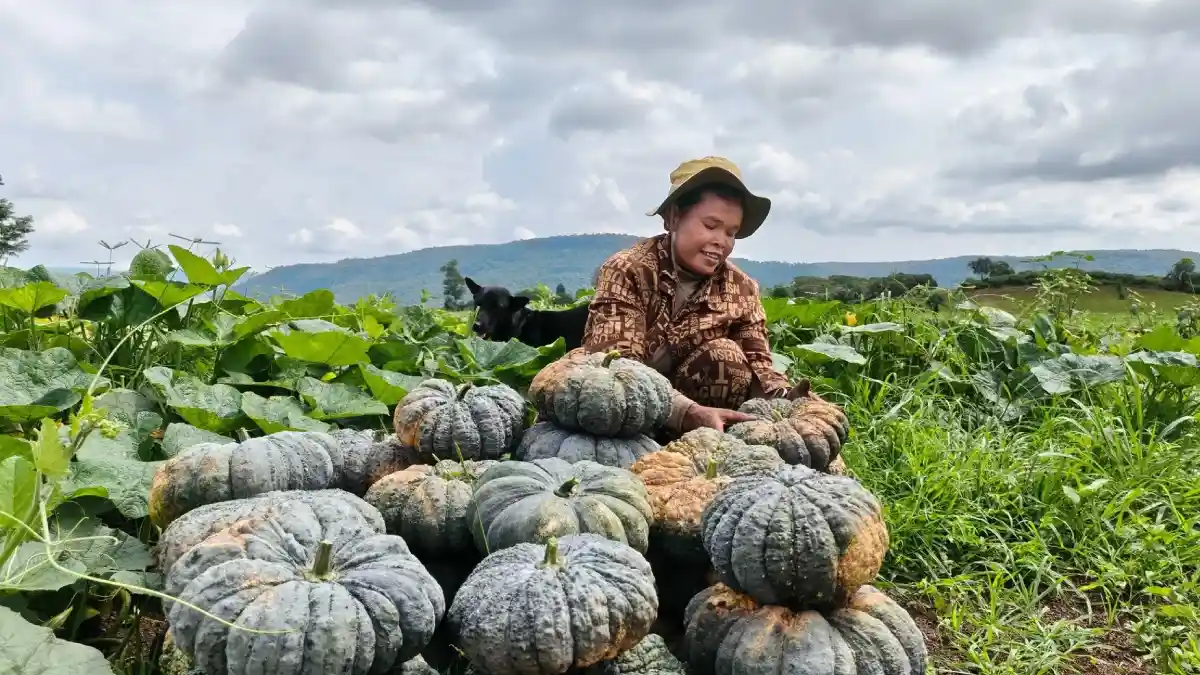In the lush, rolling hills of Preah Vihear province, a quiet agricultural revolution is unfolding. Cambodian farmers, long grappling with economic uncertainty and fluctuating market prices, have found an unexpected lifeline in a surge of patriotic pumpkin sales. Driven by a wave of public support, consumers across the country are snapping up locally grown pumpkins as a symbol of national pride and solidarity with rural communities. This phenomenon, blending economic necessity with cultural resonance, has not only boosted farmers’ incomes but also sparked discussions about sustainable agriculture and community-driven economies in Cambodia.
A Bumper Harvest of Support
The story began in the small farming communities of Preah Vihear, a northern province known for its rich soil and historical significance as the site of an ancient Khmer temple. Local farmers, many of whom have struggled with debt and unpredictable yields, faced another challenging season earlier this year. A combination of erratic weather and competition from imported produce threatened to push their livelihoods to the brink. Yet, in a remarkable turn of events, a grassroots campaign emerged to rally behind these agricultural workers.
Social media platforms buzzed with calls to “buy Cambodian” as influencers, activists, and everyday citizens urged the public to support local farmers. The humble pumpkin, a staple in Cambodian cuisine often used in soups and desserts, became the centerpiece of this movement. Branded as a symbol of national resilience, pumpkins from Preah Vihear started flying off market shelves, with sales reportedly increasing by over 200% in just a few months, according to local agricultural cooperatives.
“We never expected this kind of response” said Srey Pich, a 42-year-old farmer from Tbeng Meanchey district. “People are buying our pumpkins not just for food, but to help us keep our farms alive. It feels like the whole country is with us.”
Economic Impacts and Challenges
The economic ripple effects of this patriotic buying spree are significant, particularly for a region like Preah Vihear, where agriculture employs a large portion of the population. Preliminary estimates from the provincial agriculture department suggest that farmers have earned an additional 10 million Cambodian Riel (US$2,500) collectively in the past quarter alone due to the pumpkin boom. For many small-scale farmers, this influx of income has meant the difference between paying off loans and losing their land.
However, the sudden spike in demand has also exposed structural challenges in Cambodia’s agricultural sector. Limited storage facilities and poor transportation infrastructure in rural areas have led to spoilage and delays in getting produce to urban markets. Some farmers report struggling to scale up production quickly enough to meet demand, while others worry that the patriotic fervor may be short-lived, leaving them vulnerable once the trend fades.
“This support is a blessing, but we need more than just buyers” said Vuthy Sok, a local cooperative leader. “We need investment in roads, cold storage, and training to make sure we can sustain this growth.”
Cultural Symbolism and National Pride
Beyond economics, the pumpkin craze has tapped into a deeper vein of Cambodian identity. In a country with a history of resilience through decades of conflict and hardship, the act of buying local produce has become a statement of unity. Markets in Phnom Penh and Siem Reap now display signs proclaiming “Support Our Farmers” alongside piles of vibrant orange pumpkins, while restaurants have introduced special dishes featuring the ingredient to capitalize on the trend.
Historians and cultural analysts note that food has long played a role in Cambodian expressions of community and resistance. During the Khmer Rouge era, for instance, access to basic crops like rice was a matter of survival. Today, the pumpkin serves as a modern emblem of solidarity, connecting urban consumers with their rural counterparts in a shared national narrative.
“It’s not just about pumpkins; it’s about remembering where we come from” said Dr. Leakthina Chau-Pech Ollier, a cultural studies scholar based in Phnom Penh. “This movement shows how Cambodians can come together to support each other in times of need.”
Government and NGO Responses
The Cambodian government has taken notice of the phenomenon, with officials from the Ministry of Agriculture, Forestry and Fisheries praising the public’s initiative. Plans are reportedly underway to launch a broader “Buy Local” campaign, which could extend beyond pumpkins to other crops like rice, mangoes, and cassava. Additionally, some provincial authorities in Preah Vihear have pledged small grants to help farmers improve irrigation systems and purchase better seeds, though details on funding and timelines remain unclear.
Non-governmental organizations (NGOs) working in rural development have also stepped in, offering workshops on sustainable farming practices and market access strategies. Organizations like Oxfam Cambodia are advocating for long-term policies to protect smallholder farmers from the volatility of global trade, arguing that grassroots movements alone cannot address systemic issues.
“This pumpkin surge is a great start, but it’s not a solution” said Nary Seng, a program coordinator with a local NGO. “We need policies that ensure fair prices and protect farmers from exploitation by middlemen.”
Regional and Global Context
The patriotic pumpkin movement in Cambodia mirrors similar trends across Southeast Asia, where consumers are increasingly prioritizing local products amid growing concerns over food security and economic inequality. In Thailand, for instance, campaigns to buy domestically grown rice have gained traction, while Vietnam has seen a rise in demand for traditional crafts and produce as part of a broader push for cultural preservation.
Globally, the phenomenon aligns with a shift toward “ethical consumption,” where buyers make purchasing decisions based on social or environmental impact. While Cambodia’s pumpkin boom may seem small in comparison to international movements, it underscores a universal desire to reconnect with local economies in an era of globalization.
Yet, if not managed carefully, such trends can also lead to market distortions. Agricultural economists warn that over-reliance on patriotic buying could inflate prices temporarily, only to crash when public interest wanes. For Cambodian farmers, the challenge will be to leverage this moment into lasting change, rather than a fleeting fad.
Looking Ahead: Sustainability and Solidarity
As the pumpkin harvest season continues in Preah Vihear, farmers and advocates alike are hopeful that this wave of support will plant the seeds for broader agricultural reform. Discussions are already emerging about forming stronger cooperatives to negotiate better prices and access government support, while some younger farmers are exploring organic certification to appeal to eco-conscious consumers both domestically and abroad.
For now, though, the focus remains on celebrating a rare victory for Cambodia’s rural heartland. From bustling city markets to quiet village fields, the sight of pumpkins piled high serves as a reminder of what collective action can achieve. Whether this momentum can be sustained remains an open question, but for the farmers of Preah Vihear, the taste of success is sweeter than ever.
















